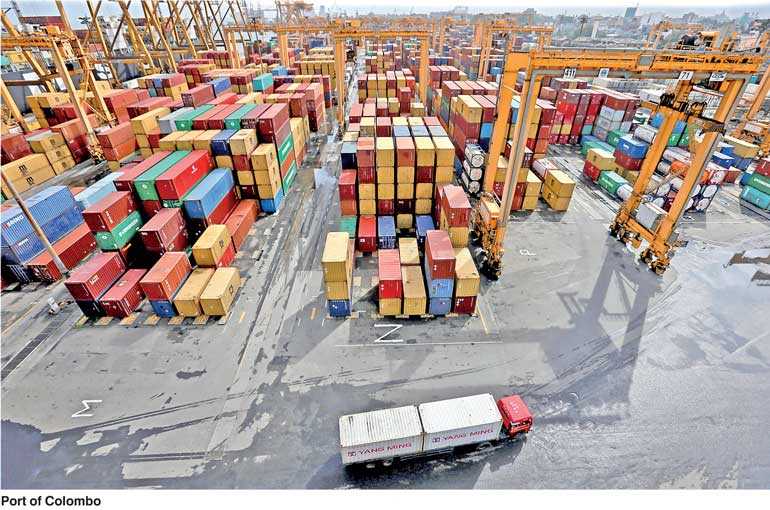Tuesday Dec 09, 2025
Tuesday Dec 09, 2025
Monday, 15 October 2018 00:00 - - {{hitsCtrl.values.hits}}

The Port of Colombo has been ranked as the world’s fastest growing port from among the top 30 container ports for the first half of 2018 according to Alphaliner. In container handling, the Port of Colombo recorded a 15.6% growth for the first half of 2018 and this is the first time in history the Port of Colombo reached this rank. With this growth, the Port of Colombo has leaped ahead of many other Asian ports, major European ports and Dubai.
According to Alphaliner global port rankings, the top container growth ports such as Singapore marked 11.6%, ranking second, Guangzhou 8.6% establishing itself in third, Antwerp (Belgium) 8.3% in fourth and the Port of Xiamen (China) 7.6% in fifth.
In a recent Drewry Port Connectivity Index, Colombo was ranked 13th best connectivity port in the world and the best connectivity port in South Asia. The Drewry Global Container Port Connectivity Index, which signifies the importance of port connectivity as important as size or scale, consists of two variables: the number of mainline services calling at each port per week and the regions in the world to which each port is directly linked.
Success story
CASA would like to congratulate the Ministry of Ports and Shipping and Sri Lanka Ports Authority for this achievement and would also like to thank South Asia Gateway Terminals (SAGT), Colombo International Container Terminals (CICT), and Hambantota International Port Group (HIPG), for the significant contribution they have made to achieve these impressive ranks. Creating history, the Port of Colombo for the first time has recorded 6.2 million container operations in 2017 and is expected to reach the 7 million TEU target by end of this year.
The MOU signed between the terminal operators, initiatives to improve efficiency, regular meetings with industry stakeholders and giving operational solutions in a timely manner are few initiatives taken by the government which significantly contributed to these commendable results.
CASA would also like to recognise the contributions made by the Shipping Lines as well as their members who played an important role in facilitating this growth. Members of CASA are involved in vessel agency, husbanding services and act as manning/crewing agents for leading ship owners and managers. They also engage in maritime education & training and provide various other services to ship owners/managers in the ports of Sri Lanka and at off port locations.
Conclusion
CASA as the voice of the shipping industry will continue its efforts to work closely with the government to develop the maritime industry and addressing concerns of all stakeholders. CASA had been highlighting the need of adding capacity at a brisk pace in order to retain Sri Lanka’s position as the best connectivity port in South Asia.
To attract services which are currently not calling Colombo and to retain the share in a growing regional transshipment market, we must have more capacity. If not, shipping lines and exporters would look for alternative ports to direct their transshipment volumes. Staying ahead of the demand curve is of paramount importance not just for growth but for survival of the port of Colombo as a transshipment port.